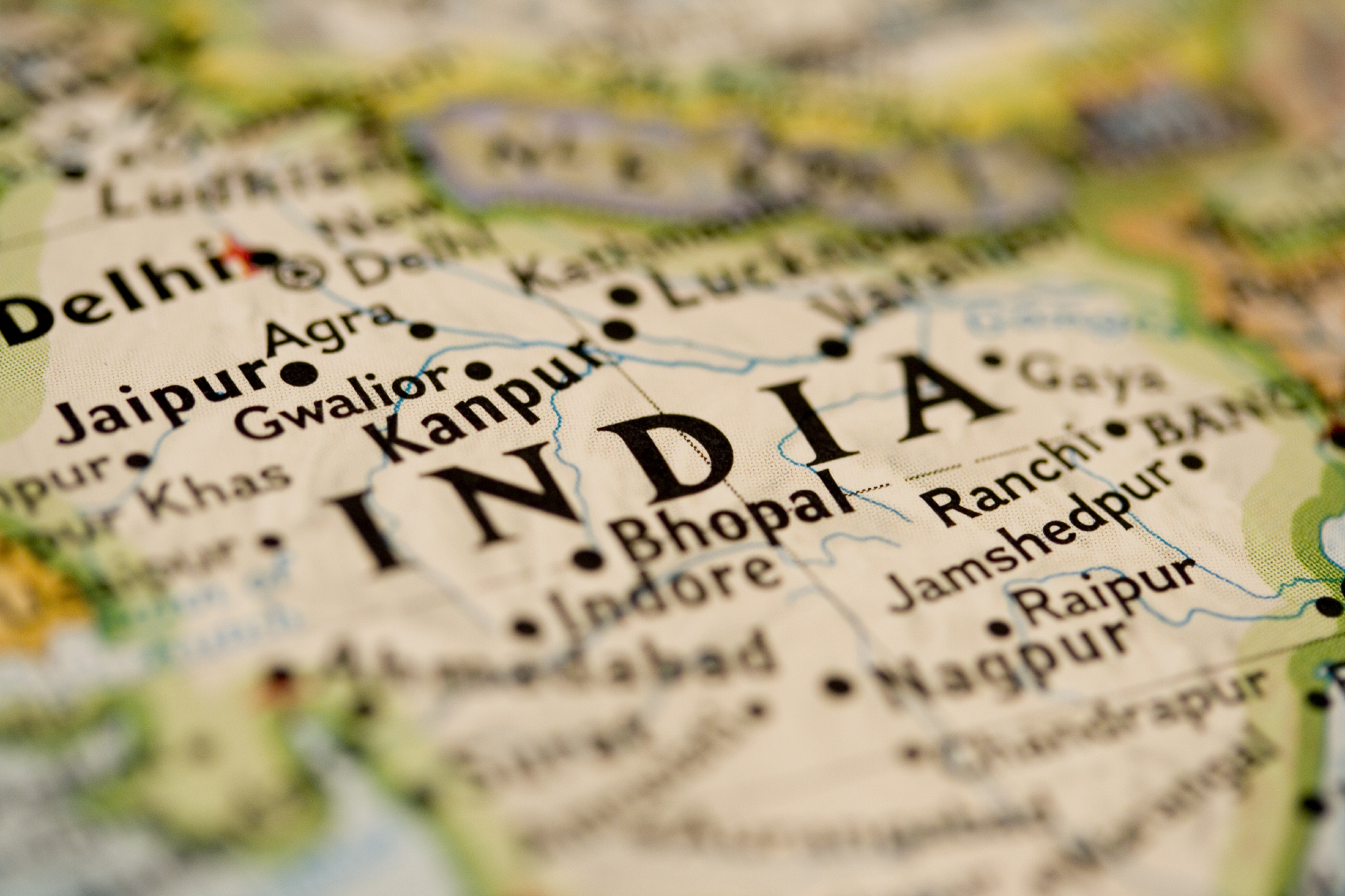The Rise of Indian Outbound Travel
Much attention has been given over the past few years to the rise of Chinese outbound tourism. And rightfully so, the nation of roughly 1.35 billion souls has undergone profound urbanization and gentrification during the last three decades. Its burgeoning middle class now represents a consumerist powerhouse greatly influencing the future of worldwide tourism. I’ve written extensively on ways for hoteliers to capitalize on this, but now let’s turn our attentions to another part of Asia – the Indian subcontinent.
As the globe’s second most populous country, India, has experienced tremendous economic upheavals in recent years. In this flat and outsourced world we live in, this ageless and ethnically diverse democratic nation of 1.2 billion people now has a sizable tech and telecommunications sector on top of its strong agricultural and manufacturing export industries.
A large economy and populous are, however, not immediately synonymous with booming outbound tourism, and indeed there are many factors both for and against India immediately following China’s lead in this regard. Rest assured, though, it’s a country that hoteliers across the globe must pay attention to, and a thorough examination of present and future conditions will give managers a better idea of how best to approach this fast-growing travel market.
The Present
If I were to liken India to a person, it would be a future hall-of-fame linebacker in the midst of puberty – lots of haphazard growth with erratic hormonal fluctuations and nothing wholly solidified as of yet. As with the vast majority of us in our adolescent years, we are just starting to envision our full potential as we grow into young adults. Only in India’s case, when the nation matures, it brings with it the world’s largest democracy and over a billion potential consumers.
There’s no question of India’s growth, but it is still a country with strong ties to its agrarian past. India has deeply entrenched regionalism with numerous religions, languages and ethnicities slowing the road towards total economic synergy. Additional obstacles include a lack of appropriate infrastructure for trade, sluggish bureaucratic systems, corruption and widespread poverty. Since the liberalization of its monetary policies in 1991, however, India has been making consistent-yet-modest strides towards full-fledged free market capitalism and not even the recent global financial downturn has had a lasting effect in stalling this advance.
Using 2012 as a comparison year, India had around 15 million departures, compared to 56 million from the United Kingdom, 60 million from the United States and just over 83 million from China. India is, however, the second fasting growing nation in gross numbers of outbound travelers behind only China. Nevertheless, India still has a few more glaring conditions which prevent it from reaching its full potential.
For starters, even though the internet has made enormous inroads in the major cities where service, software and business outsourcing are now staple industries, the vast majority of the country has yet to log in. Less than 10% of homes have broadband access while amongst the significantly smaller affluent and consumer classes, this statistic is close to reversed. This hiccup in ubiquitous internet adoption has caused further delays in the proliferation of social media usage as well as ecommerce via online travel agencies (which is further compounded by the fact that the majority of Indians don’t own a credit card).
All this means that the OTAs are mainly for ‘looking rather than booking’ with most travel transactions occurring via traditional travel agents, directly with an airline or through a corporate travel department. There are currently over 20,000 active agents throughout the country, but they are dispersed amongst many small tour companies rather than a select few consolidated operators like in the West.
These conditions are in sharp contrast to the largest urban centers where smartphones, social media and OTAs are already seeing extensive adoption with over 165 million active users as of 2014, most of them using Facebook with minor contributions from Twitter, blogging and YouTube. In fact, this group of cities, which includes Bangalore, Chennai, Delhi, Hyderabad, Kolkata and Mumbai, corresponds to over 90% of recent outbound travelers. Amongst this demographic, the most popular booking websites include Cleartrip.com, Yatra, Travelocity, Expedia, Travelchacha.com, Travelguru.com and MakeMyTrip.
Aside from any internet barriers, the interests of traveling Indians are more or less the same as those people from everywhere in the world. Shopping, sightseeing, museums, history, nightlife, amusement parks and ecotourism lead the pure leisure motivations, while visiting family and business remain as the top two overall. Also note that most people departing India for business or a vacation are first-time travelers.
The foremost travel destinations are those within short-haul range – that is, less than a six hour flight – including the Maldives, Singapore, Thailand, Malaysia, United Arab Emirates and Kuwait. Long-haul tourism (over six hours flight time) is seeing sizeable growth to the United States, United Kingdom, South Africa, Australia, Indonesia, France, Italy, Switzerland and Canada due in large part to the greater capacity nowadays for low cost travel via the OTAs, even though visa issuing to these countries remains a primary obstacle.
The last key barrier to reaching and influencing outbound Indian travelers has to do with the country’s strong indigenous hospitality brands. Unlike China, which lacked a commercial hotel industry for most of the 20th century due to its relative isolation under hardliner communist rule, India’s domestic hotel brands are entrenched and thriving. This has prevented a full-blown conquest by the leading international entities, which in turn means it’s harder for outside hotel companies to raise awareness and instill their brand values amongst Indian consumers. This hasn’t necessarily affected outbound travel per se, only how consumers choose their properties.
The Future
By far the most critical trend affecting India is the rise of its consuming class, which is defined as having an annual household income of greater than $5,000 (US). McKinsey estimates that this largely urban middle class will break the 500 million mark by 2025. This growth in average earnings will translate into 50 million outbound tourists (if the rupee remains stable as a currency) as well as India overtaking the US as the second largest mobile market behind China. Concurrent to this will be further urbanization and recreational spending as well as the development of more secure credit card operations.
All told, by 2025, India will be the world’s fifth largest economy behind China, the US, Japan and the Germany. While the nation may have a plethora of Hindu dialects and other spoken languages (the millennia-old Sanskrit is still taught in schools by the way), English is becoming the common go-between and the language of commerce. As with other progressions towards first world conditions, expect longer life spans amongst the Indian populous, indicating that there will be an influx of senior travelers. Moreover, women will gain more equality both at home and at the office, translating to a greater degree of influence in couples and family trip planning as well as more female travelers overall, both for business and leisure.
This economic prowess will also involve many psychographic shifts. As the Indian economy integrates with the rest of the world, we will see bolder vacation decision making to previously unsought long-haul destinations such as Spain, Turkey, China, New Zealand and Germany. Greatly influencing what locales emerge as popular will be direct flight access (or nonstop plus one stop) from India. In this sense, proximity will still be a ruling factor as such destinations will most likely correlate with cheaper costs for travelers and shorter visa-issuing times. All told, Travel will amount to over $90 billion in worldwide travel expenses by 2030.
Social networks and smartphones will, of course, continue to flourish – with some estimates projecting over 280 million social media users by 2020 – making both social shopping platforms and mobile advertising as key promotional channels to help motivate consumers. Facebook will continue to be the dominant network, although niche sites such as Instagram and Pinterest will make headway as internet users mature. However, this shift to digital dependence won’t be binary, meaning that traditional travel agents, print media, television and word of mouth will still play a central role in travel decisions.
What You Can Do
Caveat: there isn’t much you can do to move your property’s location – you are where you are. So, if you find yourself in a place where Indian travelers just aren’t looking (refer to abovementioned hotspots), then there isn’t all that much you can do. Sorry for being blunt, but your resources would be better allocated towards enticing other more fruitful markets.
If you find yourself situated in a city or region where Indian travelers are or might soon be hankering to visit, then there are a few key efforts you can undertake to raise awareness and draw more eyeballs to lead to more sales down the road. To start, the Indian market is ginormous; you must focus your marketing and advertising efforts. My suggestion is to stick with the main urban centers listed above.
The crux of your efforts, though, will come through tactics in the digital realm. Your website should be the hub for all further activities and social networking. Once a potential guest finds you through a Google search, tourism agency, travel agent or OTA, if they’re at all intrigued then they’ll be very likely to click over to your brand.com to get a quick sense of your property. With Facebook rapidly solidifying its position as the foremost social site, I’d suggest you spruce this up, if you haven’t already. As well, coherent English in all copy is a must.
On this note, targeted social media advertising campaigns present a viable option for reaching this audience, even though they’ve been proven to be less effective in internet-mature markets like the US or Western Europe. Ultimately, in my opinion, social media for India would best be utilized with the same philosophy as everywhere else – with content that adds value and gets the conversation rolling.
And there’s no better form of rich content that facts, images and videos that help tell your property and your area’s unique experience. Yes, just like everyone else across the globe, the Indian traveler craves the authentic. So, what makes you unique as a property? What gives your region identity? How can you demonstrate this to guests both onsite and online? Why should citizens of this country spend a minimum of eight hours cramped in an airplane to visit your area? With arguably the most flavorful food in the world, why should an Indian traveler care to try your local cuisine?
Answering these questions will not only help you with potential gains in awareness and sales from the subcontinent, but also from everywhere else. My advice: express your uniqueness and you’ll be sure to come up winning either way.
(Published by Larry Mogelonsky in Hotel Executive November 3, 2014)




